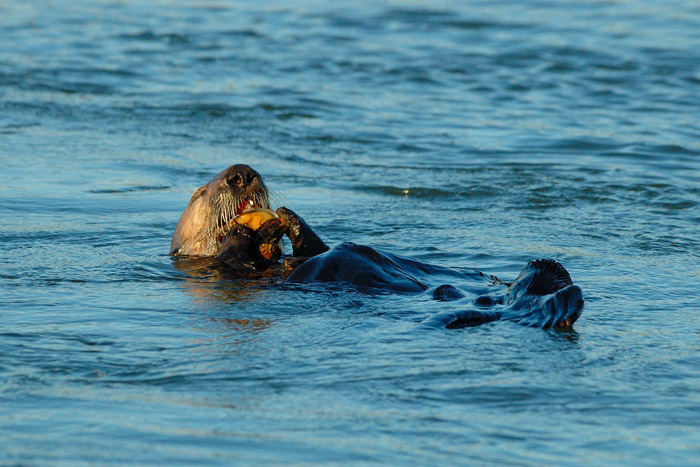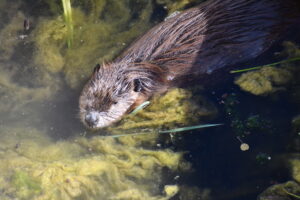A young southern sea otter that had spent the last several weeks living in Richardson Bay died over the weekend.
The otter, a 3-to-4 year old male, was found on Saturday and sent to California Department of Fish and Wildlife for a post-mortem examination, which veterinary pathologist Melissa Miller said ruled out some causes of death, but did not confirm one.
“The findings are very nonspecific,” Miller said. “He was skinny. He didn’t have much in the way of subcutaneous fat. There could be some issues around biotoxins or other types of things. But we didn’t see any evidence of foul play, like a gunshot wound, or evidence of boat strike.”
It was the first confirmed sea otter in San Francisco Bay since one was spotted off Alameda in 2011, and only the 16th “credible report” since 1979, said US Fish and Wildlife Public Affairs Officer Ashley Spratt. Still, she said, while southern sea otters cluster mainly around the coast between San Mateo and Santa Barbara Counties, the Bay is part of the otter’s historic range, and young male otters are known to range widely, from Tomales Bay in the north to San Diego County in the south.
“The piece that’s really interesting is that range expansion for southern sea otters is absolutely essential for their recovery,” Spratt said. “They have reached their carrying capacity in the central portion of their range, based on available food supplies. So this report is not an indication of range expansion, but it is an indication that there are the resources there that would support otters.”’

The southern sea otter has been on the Endangered Species Act’s threatened list since 1977, and has slowly recovered from near-extinction in the 1930s. The population has grown to roughly 2,900 otters, according to a 2014 report from the US Geological Survey, which does annual counts of the southern sea otter population.
The Richardson Bay otter arrived sometime around late June or early July, and was spotted eating clams and shellfish, grooming, and resting near the path leading from Sausalito to Mill Valley. A YouTube video posted by the user NorthwesternPacificHistoryIsCool shows the otter swimming near the shoreline and around the Highway 101 bridge.
Biologists observed it regularly, and The Marine Mammal Center had put up signs warning kayakers and boaters to give the otter space. Its carcass was first reported to TMMC, which then sent it to Miller for a necropsy.
The otter had full adult teeth, but little wear and tear on them, Miller said. Based on a still-open suture at the base of its skull, she estimated the age at 3-4 years. While it was still in Richardson Bay, observers saw the otter have an apparent seizure, Miller said, which suggests neurological disease. A recent algal bloom in Monterey Bay has led to a high level of the biotoxin domoic acid in the water, and TMMC Public Relations Specialist Laura Sherr said the rescue center has seen a high number of sea lions suffering from domoic acid poisoning in the last month, with symptoms including seizures.
But seizures could also be the result of low blood sugar in an emaciated animal, Miller said. She’ll need to do biotoxin tests, and look at tissue samples under a microscope, before she can better determine what caused the otter’s death.

There were also two unusual things about the otter’s life. Although Alaskan sea otters eat fish, southern sea otters rarely do – but this otter, Miller said, seemed like it had.
“It’s very unusual to see roundworms in sea otters in California,” Miller said. “This one had a few in his stomach. When we see that, usually it means that the otter ate fish in its life.”
It also had thinning hair around its lips, which Miller said might be a kind of mange – southern sea otters have their own mange-causing mite, which has never been described — although it’s not something she can determine without a microscope. She’s waiting now for tissue slides to return from UC Davis.
“The process is such that we want the animal to tell their whole story,” Miller said. “How he died, why he died, what that might mean in the bigger picture. And also how he lived.”





